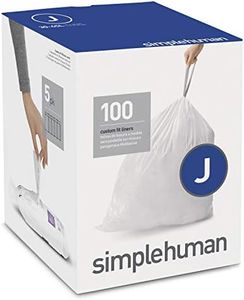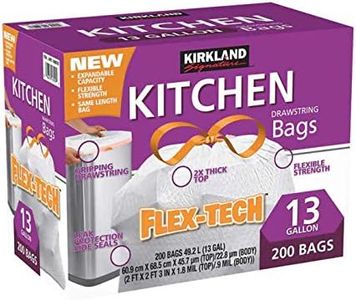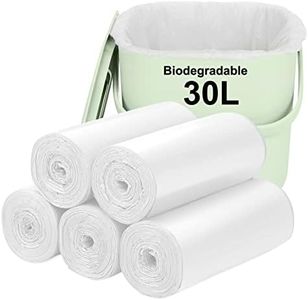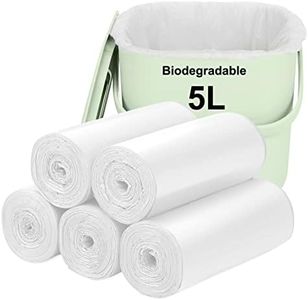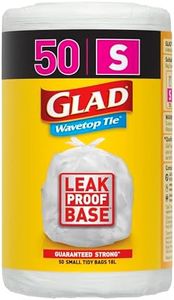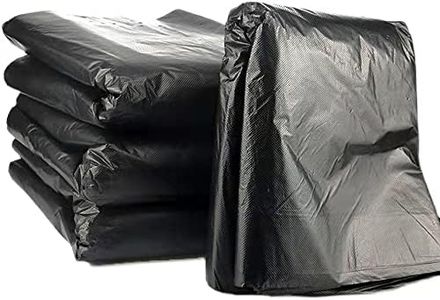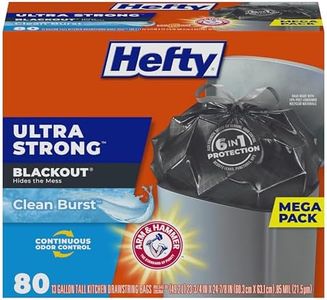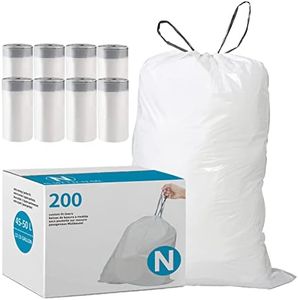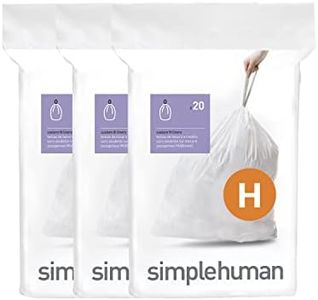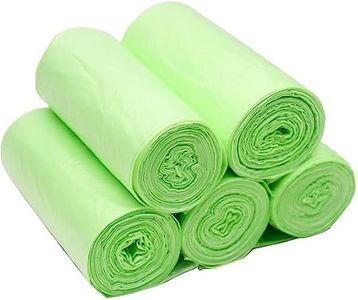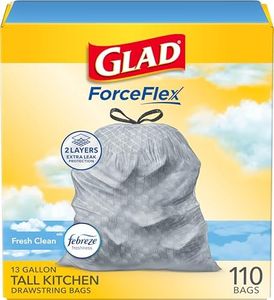We Use CookiesWe use cookies to enhance the security, performance,
functionality and for analytical and promotional activities. By continuing to browse this site you
are agreeing to our privacy policy
10 Best Kitchen Trash Bags
From leading brands and best sellers available on the web.Buying Guide for the Best Kitchen Trash Bags
Choosing the right kitchen trash bags is important for keeping your kitchen clean, odor-free, and easy to manage. The right bag will make taking out the trash simple and help prevent leaks, spills, or messy accidents. When shopping for kitchen trash bags, pay attention to the following key specifications to ensure the bag fits your needs and your trash can.Capacity (Size)Capacity refers to how much the bag can hold, usually measured in gallons or liters. This determines if the bag will fit your trash can and hold your household waste without overflowing. Common sizes range from around 8 to 13 gallons for kitchens. Smaller sizes work for compact bins or light use, while standard kitchens often need 13-gallon bags. Consider the size of your trash can and how much waste your household produces daily—choose a bag size that matches your can and ensures you won't need to change the bag too frequently.
Thickness (Mil or Microns)Thickness tells you how strong the bag is and its ability to hold up against tears or punctures. This is usually measured in mils (thousandths of an inch) or microns (millionths of a meter). Thinner bags (around 0.7-0.9 mil) are fine for light waste like food scraps or paper, while thicker bags (1.0 mil and above) are better for sharp or heavy waste like bones, cans, or broken glass. If your bags often rip or leak, choose thicker bags for extra durability.
MaterialThe material of the bag affects its strength, flexibility, and whether it's eco-friendly. Most kitchen trash bags are made from plastic—either low-density (strong and stretchy) or high-density (thinner, less stretchy, but puncture-resistant). Some bags are also made from biodegradable or compostable materials, which are better for the environment but may not be as durable or leak-proof. Decide what's most important: environmental impact or strength, and select the material that fits your household's values and needs.
Closure TypeClosure refers to how the bag is sealed and tied. The most common types are drawstring, flap tie, and simple open top. Drawstring closures are easy to seal and carry, making them great for regular kitchen use. Flap tie bags require tying the loose ends by hand, which is simple but can be messier. Open top bags need to be tied manually as well and may not offer a tight seal. If you value convenience and easy transport, choose bags with a drawstring.
Odor Control FeaturesOdor control means the bag helps reduce bad smells from trash, either through scent or special materials. Some bags are scented to mask odors, while others have built-in odor-neutralizing technologies. If your trash sits for a while before being taken out, or if you dispose of strong-smelling food, a bag with odor control can help keep your kitchen fresher.
Leak ResistanceLeak resistance is the bag's ability to keep liquids from seeping out. Some bags include extra seals, thicker bottoms, or reinforced materials to prevent leaks. If you often throw out wet or messy waste, look for bags that promise leak resistance to avoid extra cleaning and to protect your trash can.
